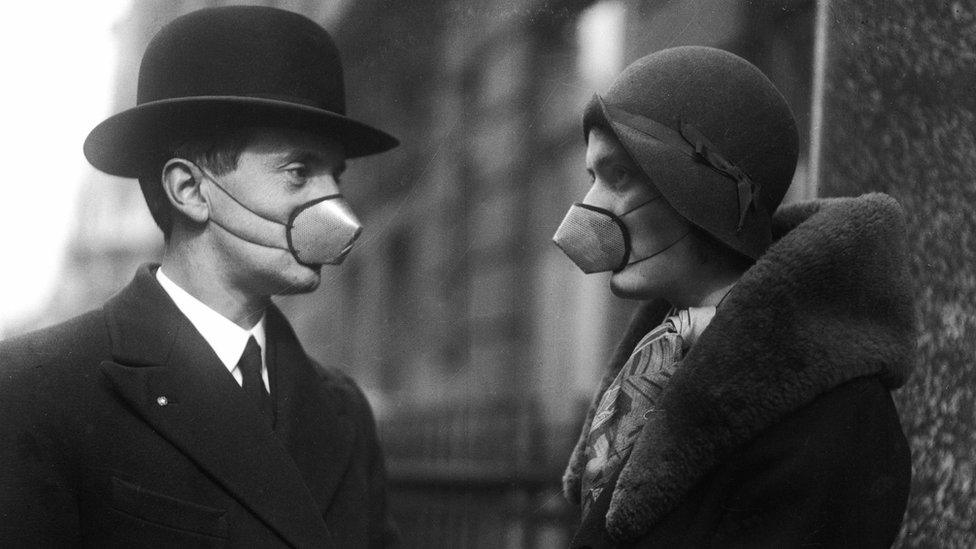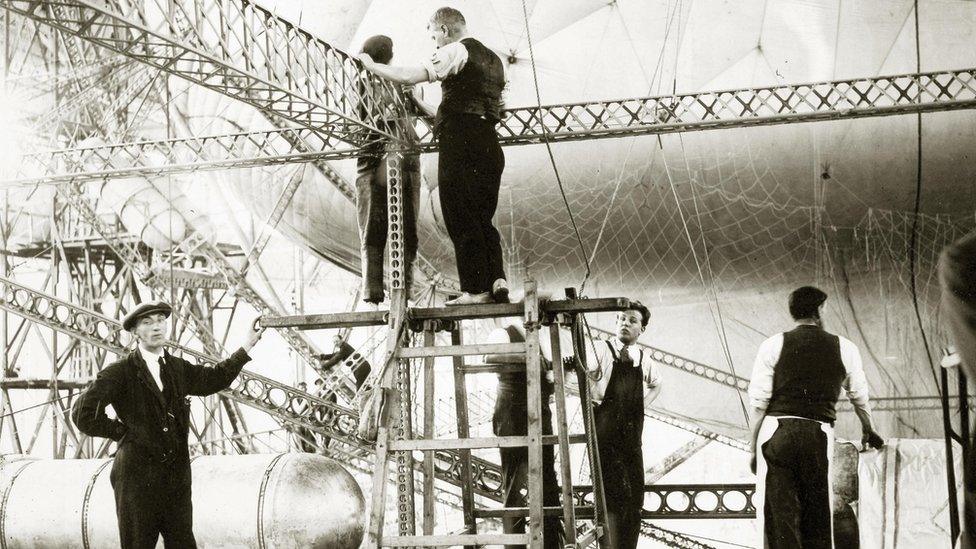National Archives exhibition reveals 'Roaring Twenties' reality
- Published

The decade begin with the nation still reeling from the effects of the deadly Spanish flu pandemic
An exhibition at the National Archives aims to dispel popular myths about the "Roaring Twenties" and reveal what life was really like a century ago.
The 1920s are known for glitz, glamour, jazz and modernisation, but the reality of post-war, post-flu pandemic Britain was, for many people, very different.
Behind the Roar brings their stories to life for visitors to the National Archives, at Kew in west London.
The recently published 1921 Census is the "keystone" of the exhibition.
Curators have drawn artefacts from the National Archives' vast collection to put the lives of the people recorded in the 1921 Census for England and Wales into context.
Hannah Fleming, exhibition manager, said she hoped the event would shine new light on the "tumultuous" decade.

Behind the "roar" of the 1920s, Britain was recovering from World War One. This image shows peace celebrations from 1919
"People were living though a period of fast-paced change, in political and cultural life, after the First World War, and they were returning to a world markedly different from the one they left behind," she said.
"We're trying to recreate the world these 38 million people were living in, and how the changes affected individual people and individual lives."
The exhibition will showcase the changing role of women, the rise of fascism and strengthening anti-colonialism.

The construction of Airship R101 at the Royal Airship Works, Cardington, Bedfordshire. The government wanted airships capable of long-distance routes within the British Empire
Visitors will be able to stroll down a recreated city street, where they can experience a snapshot of the era through the lens of political activists, a draper's shop and lonely hearts ads. A recreation of The 43 nightclub, an infamous venue in Soho, external that was synonymous with the louche lifestyle often associated with the 1920s, will also be part of the exhibition.
In common with modern-day Britain, Londoners of that time had also experienced a killer virus - in their case Spanish flu. It was much deadlier than Covid-19 though, killing millions of people between 1918 and 1919.
Ms Fleming said Britain was a "nation in trauma" during the 1920s. Unemployment was widespread, and many people took part in anti-poverty marches.
She added: "Something that really comes through in this is the question of activism.
"People were agitating to make their lives better. There is a running thread of defiance with lots of the people we feature."
1920s: Behind the Roar, external, a free exhibition, opens at the National Archives in Kew on 21 January and runs until June.